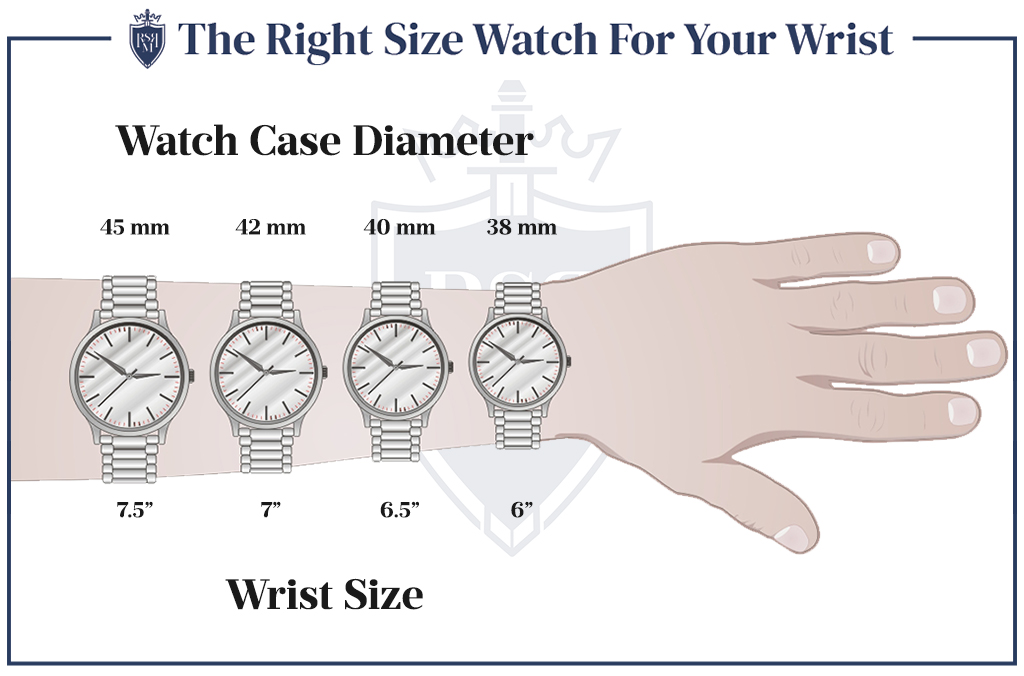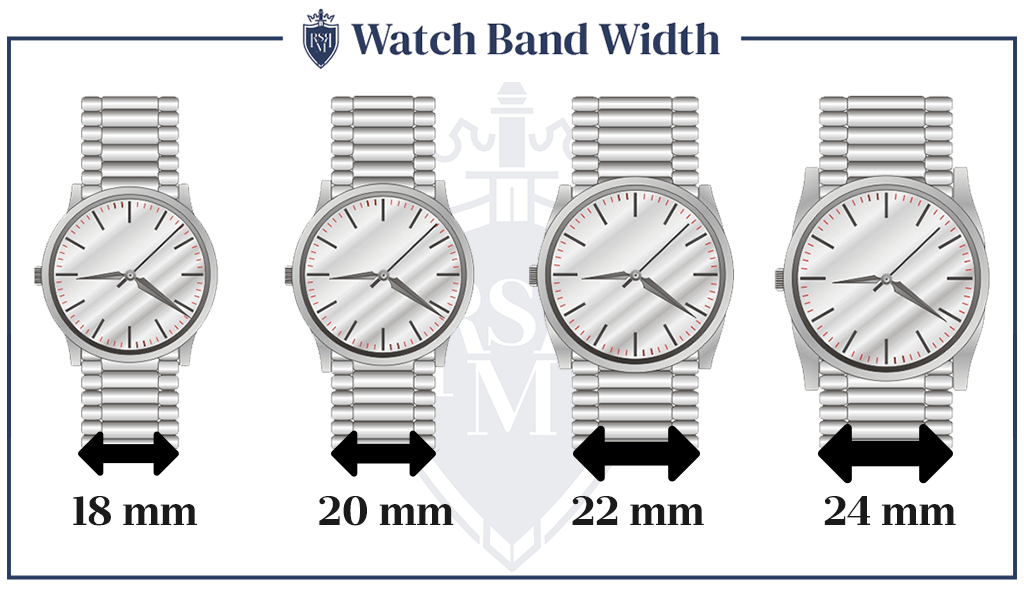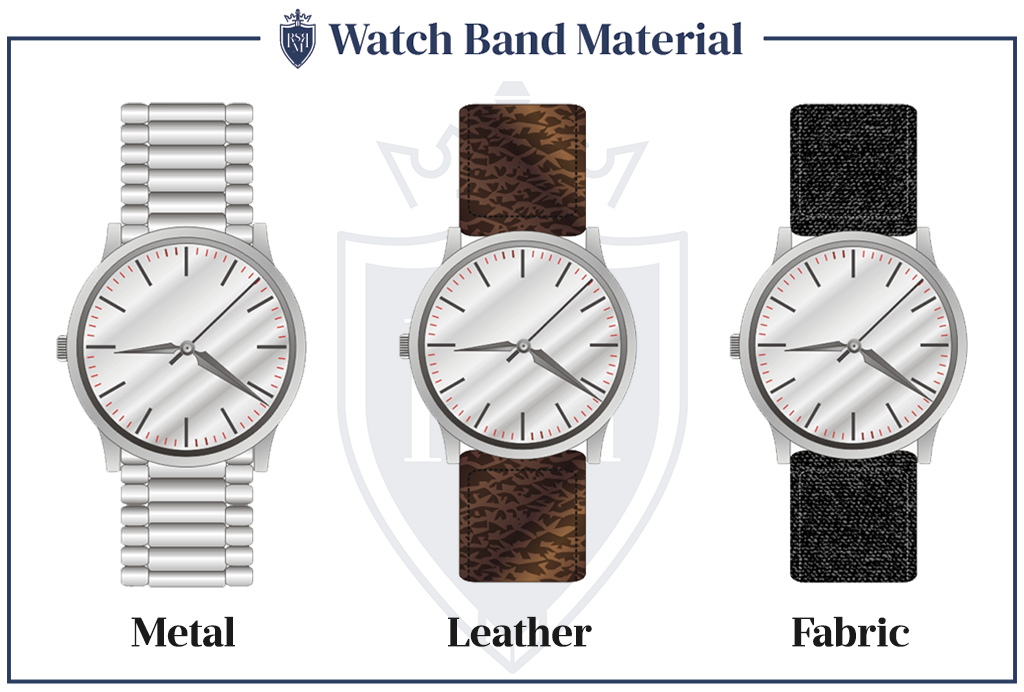When it comes to men's style – balance is key.
Whether it be the fit of your jacket; length of your sleeves or width of your pants, it's essential that your outfit is well balanced and looks harmonious.
That rule also applies to the different watch sizes a man can wear in relation to the size of his wrist.
In today's article, I'm breaking out how to buy the right size watch for your wrist.

Which watch sizes work with my wrist?
Generally speaking, if you have a smaller wrist, you want a smaller watch. If you have a larger wrist you want a larger watch.
Let's break that down a little bit more into 5 key elements.
Watch Sizes Tip #1 Watch Case Diameter

Case Diameter is the most obvious and noticeable element of proportion. Men's watches usually range from 38mm to 46mm.
- Watch cases bigger than 46mm start to become too large and are usually reserved for rakish or flashy outfits.
- Watch cases smaller than 38mm lean into women's size watches.
So how do you know what size works for you?
Simple: measure your wrist.
How Do I Measure My Wrist For A Watch?
Wrap a tape measure around the area of the wrist you'd usually wear your watch on.
If you don't have a tape measure, you can use a dollar bill. Modern US Paper Currencies are 6 inches in length. Wrap the dollar bill around your wrist to find a rough circumference of your wrist.
- Wrist circumference: 6-7 inches – you have a small to medium wrist. Look for small to medium diameter watch cases – 38mm, 40mm, and 42mm.
- Wrist circumference: 7.5 to 8 inches – you have a large wrist. Look for watch cases with a diameter of 44mm, and 46mm.
Watch Sizes Tip #2 Watch Case Thickness

Case thickness is oftentimes directly correlated to case diameter.
Back when mechanical watches were dominating the market, it was perceived that a thinner case was of higher quality.
This is no longer the case with electronic watches entering the market, as well as quartz designs.
A general rule is, as the diameter of the case increases or decreases, the thickness does as well.
Usually for 38mm to 42mm diameter, you will see around 7 mm in thickness. Once you get up to 44mm and beyond, the thickness increases to around 9mm.
Watch Sizes Tip #3 Watch Band Width

A well-proportioned watch usually has a band width of about half its case diameter. If you wear a 40mm watch, the width should be approximately 20mm in width.
Depending on your style preference you may want to wear a watch with a wider band width.
My preference is for smaller band widths, however, I do have smaller wrists.
If you have larger wrists you may lean towards wider bands.
If you are only shopping for cases and want to pick out a band later, you can determine what the width of the band will be based on the lug width.
Watch Sizes Tip #4 Watch Band Material

Leather bands are going to give your watch a slimmer look.
A metal watchband, even one the same size as a leather band, will always appear larger & heavier because of the nature of metal.
This is an important consideration if you have smaller wrists.
Metal bands will present the appearance of a larger watch, making it a primary choice for men with larger wrists.
Watch Sizes Tip #5 Watch Details
Last but not least, look at the size of the components on the watch.
This means notice the numbers, the hours, and second hands. The lug size, the pusher, and changer.
As these components grow in size and thickness it gives the illusion of a larger watch.
This can cause watches on men with smaller wrists to appear to be out of proportion, especially combined with any of the elements mentioned above.
The important thing to notice with components is how they play into the other elements of the watch.
If you have a 38mm to 40mm watch and the numbers are huge, it will look unbalanced.
On the flip side, if you have a 9mm thick watch with a 46mm case diameter and thin hour hands something might seem off as well.
Watch Size Tip #6 Watch Weight
When it comes to men's watches, there is a wide range of weight options available. Automatic watches, which are powered by the wearer's energy, can weigh anywhere from 56g to 125g.
On the other hand, quartz watches typically weigh less than automatic watches and can range from 100 grams for a case to 230-250 grams for heavier models.
The weight of a watch is an important factor to consider when making your choice. Heavier watches tend to be more durable and have a higher quality feel, but they may also be uncomfortable on the wrist after extended periods of wear. Lighter watches are often more comfortable but may not have the same level of durability or quality as their heavier counterparts.
Ultimately, choosing the right watch weight comes down to personal preference and lifestyle needs. If you're looking for something that will last longer and provide a higher quality experience, then opting for a heavier watch might be the best option.
Now that you have the right watch, let's talk rings. Click here to discover the secret world of signet rings.
- Watch Case Diameter
- Watch Case Thickness
- Watch Band Width
- Watch Band Material
- Watch Details & Components
- Watch Weight
Click below to watch the video – 5 Rules To Buy The Right Size Watch For Your Wrist Proportions!
The post How To Buy The Right Watch Sizes For Your Wrist appeared first on Real Men Real Style.
0 Commentaires